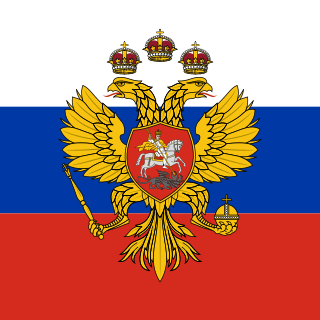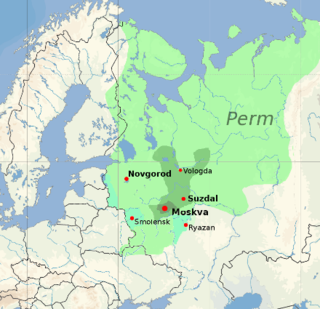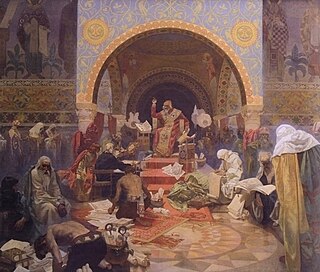
The word emperor can mean the male absolute ruler of an empire. Empress, the female equivalent, may indicate an emperor's wife, mother/grandmother, or a woman who rules in her own right and name. Emperors are generally recognized to be of the highest monarchic honor and rank, surpassing kings. In Europe, the title of Emperor has been used since the Middle Ages, considered in those times equal or almost equal in dignity to that of Pope due to the latter's position as visible head of the Church and spiritual leader of the Catholic part of Western Europe. The Emperor of Japan is the only currently reigning monarch whose title is translated into English as "Emperor".

Peter I, commonly known as Peter the Great, was Tsar of all Russia from 1682, and the first Emperor of all Russia from 1721 until his death in 1725. He jointly ruled with his elder half-brother, Ivan V, until 1696. He is primarily credited with the modernisation of the country, transforming it into a major European power.
Grand duke is a European hereditary title, used either by certain monarchs or by members of certain monarchs' families. In status, a grand duke traditionally ranks in order of precedence below an emperor, as an approximate equal of king or archduke and above a sovereign prince or sovereign duke. The title is used in some current and former independent monarchies in Europe, particularly:

Ivan IV Vasilyevich, commonly known in English as Ivan the Terrible, was Grand Prince of Moscow and Sovereign of all Russia from 1533, and the first Tsar of all Russia from 1547 until his death in 1584. Ivan came from the imperial bloodline of Byzantine Palaiologos family through his grandmother Sophia Palaiologina.

Ivan III Vasilyevich, also known as Ivan the Great, was Grand Prince of Moscow and Sovereign of all Russia. Ivan served as the co-ruler and regent for his blind father Vasily II from the mid-1450s before he officially ascended the throne in 1462.
Grand prince or great prince is a title of nobility ranked in honour below emperor, equal of king or archduke and above a sovereign prince.

The Imperial crown of Russia, also known as the great imperial crown, was used for the coronation of the monarchs of Russia from 1762 until the Russian monarchy's abolition in 1917. The great imperial crown was first used in the coronation by Catherine the Great, and it was last worn at the coronation of Nicholas II. It was displayed prominently next to Nicholas II on a cushion at the State Opening of the Russian Duma inside the Winter Palace in St. Petersburg in 1906. It survived the 1917 revolution and is currently on display in Moscow at the Kremlin Armoury's State Diamond Fund.

Monomakh's Cap, also called the Golden Cap, is a chief relic of the Muscovite Grand Princes and Russian Tsars. It is a symbol-crown of the Russian autocracy, and is the oldest of the crowns currently exhibited at the Imperial treasury section of the Kremlin Armoury. Monomakh's Cap is an early 14th-century gold filigree skullcap composed of eight sectors, elaborately ornamented with a scrolled gold overlay, inlaid with precious stones and pearls, and trimmed with sable. The cap is surmounted by a simple gold cross with pearls at each of the extremities.
Byzantinism, or Byzantism, is the political system and culture of the Byzantine Empire, and its spiritual successors the Orthodox Christian Balkan countries of Greece and Bulgaria especially, and to a lesser extent Serbia and some other Orthodox countries in Eastern Europe like Belarus, Georgia, Russia and Ukraine. The term byzantinism itself was coined in the 19th century. The term has primarily negative associations, implying complexity and autocracy.

The Tsardom of Russia or Tsardom of Rus', also known as the Tsardom of Muscovy, was the centralized Russian state from the assumption of the title of tsar by Ivan IV in 1547 until the foundation of the Russian Empire by Peter the Great in 1721.
Tsarist autocracy, also called Tsarism, was a form of autocracy specific to the Grand Duchy of Moscow and its successor states the Tsardom of Russia and Russian Empire. In it, the Tsar possessed in principle authority and wealth, with more power than constitutional monarchs counterbalanced by a legislative authority, as well as more religious authority than Western monarchs. The institution originated during the time of Ivan III (1462−1505), and was abolished after the Russian Revolution of 1917.

The Grand Duchy of Moscow, or simply Muscovy, was a Rus' principality of the Late Middle Ages centered on Moscow. It eventually evolved into the Tsardom of Russia in the early modern period. It was ruled by a branch of the Rurik dynasty, which had reigned in Kievan Rus' since its foundation.

The coronation of the emperor of Russia from 1547 to 1917, was a highly developed religious ceremony in which the emperor was crowned and invested with regalia, then anointed with chrism and formally blessed by the church to commence his reign. Although rulers of Muscovy had been crowned prior to the reign of Ivan III, their coronation rituals assumed overt Byzantine overtones as the result of the influence of Ivan's wife Sophia Paleologue, and the imperial ambitions of his grandson, Ivan the Terrible. The modern coronation, introducing "Western European-style" elements, replaced the previous "crowning" ceremony and was first used for Catherine I in 1724. Since tsarist Russia claimed to be the "Third Rome" and the replacement of Byzantium as the true Christian state, the Russian rite was designed to link its rulers and prerogatives to those of the so-called "Second Rome" (Constantinople).

Regalia of the Russian tsars are the insignia of tsars and emperors of Russia, who ruled from the 13th to the 19th century. Over the centuries, the specific items used by Tsars changed greatly; the largest such shift occurred in the 18th century, when Peter the Great reformed the state to align it more closely with Western European monarchies.

Tsar, also spelled czar, tzar, or csar, was a title used by East and South Slavic monarchs. The term is derived from the Latin word caesar, which was intended to mean "emperor" in the European medieval sense of the term—a ruler with the same rank as a Roman emperor, holding it by the approval of another emperor or a supreme ecclesiastical official —but was usually considered by Western Europeans to be equivalent to "king". It lends its name to a system of government, tsarist autocracy or tsarism.

The schism between the Ecumenical Patriarchate and part ofitsMetropolis of Kiev and all Rus occurred between approximately 1467 and 1560. This schism de facto ended supposedly around 1560.

Moscow, third Rome is a theological and political concept asserting Moscow as the successor to ancient Rome, with the Russian world carrying forward the legacy of the Roman Empire. The term "third Rome" refers to a historical topic of debate in European culture: the question of the successor city to the "first Rome" and the "second Rome".

The problem of two emperors or two-emperors problem is the historiographical term for the historical contradiction between the idea of the universal empire, that there was only ever one true emperor at any one given time, and the truth that there were often multiple individuals who claimed the position simultaneously. The term is primarily used in regards to medieval European history and often refers to in particular the long-lasting dispute between the Byzantine emperors in Constantinople and the Holy Roman emperors in modern-day Germany and Austria as to which monarch represented the legitimate Roman emperor.
































